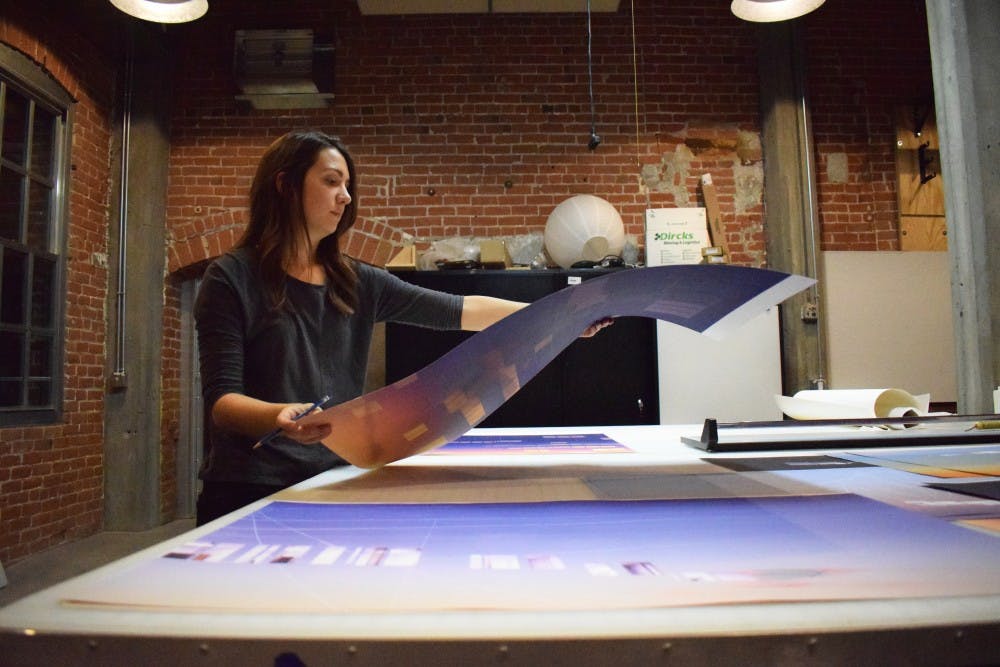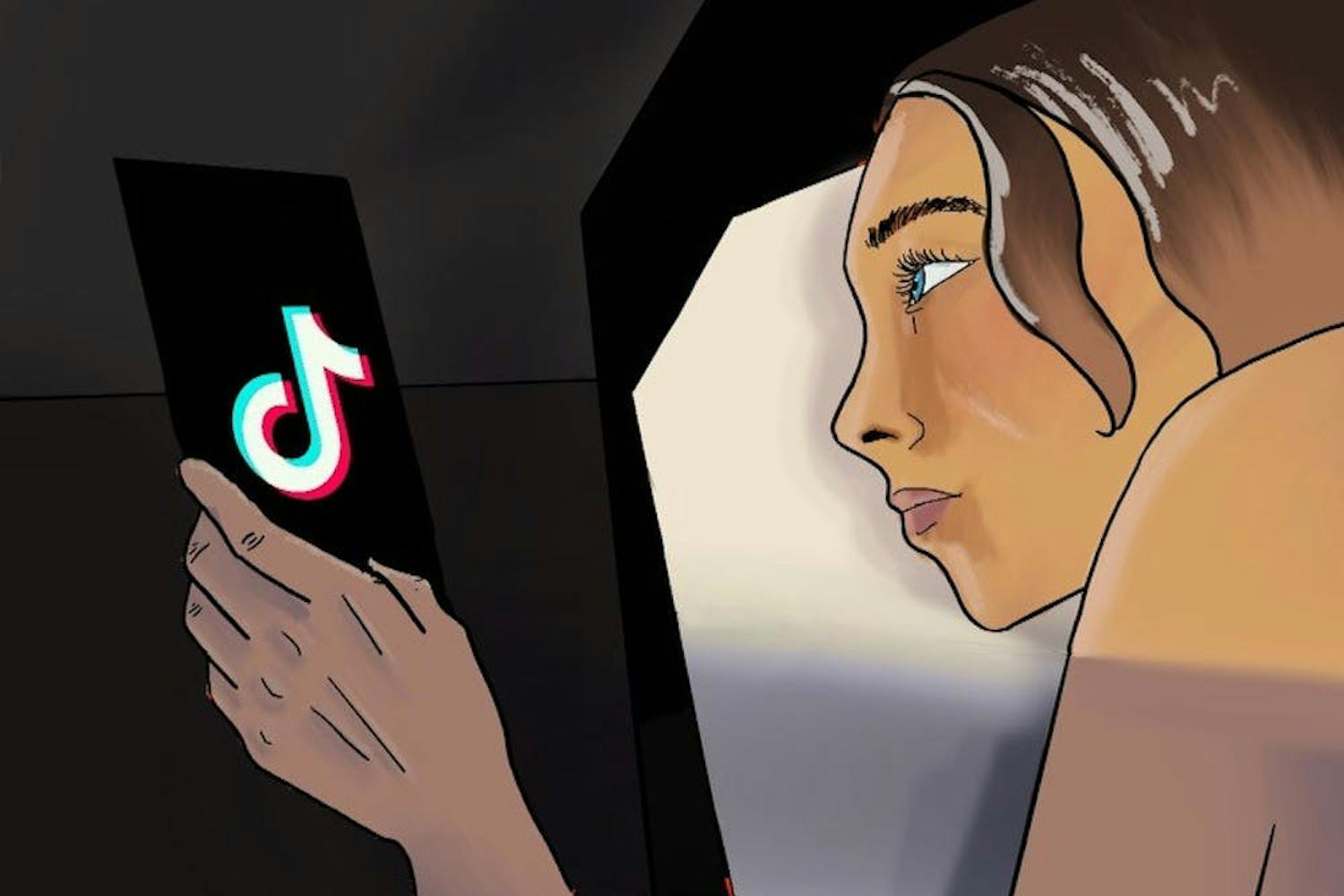Blue lights filling the night sky might seem like a natural part of life for those living in downtown Tempe, but according to one ASU student's project, living in this kind of environment can have some unseen consequences.
Louise Fisher, a graduate student at ASU's School of Art, will be showcasing her master's thesis exhibition “Lucid: A Year In Dreams,” which explores how light pollution affects the human body.
The exhibit will run from March 25 to 29, with an opening reception on March 26 at the Harry Wood Gallery.
Fisher said that while she drew inspiration from a number of places, her idea was sparked when she moved from rural Iowa to downtown Tempe and noticed the excessive use of artificial blue light that can be seen at night when living in the city.
“I really want to speak to an urban audience and help them notice something that goes unnoticed,” she said. “It’s not something that we really think about much, unless you put yourself out there camping, or get out of the city or just turn the lights off.”
Fisher’s exhibition combines the science of light pollution with art in the form of mixed-media prints, photography, poetry and an installation that features an old-fashioned magic lantern projection.
One of the main art displays in the exhibit will feature long-exposure photos of the night sky in downtown Tempe, which were taken with a pinhole camera that served to more closely simulate light receptors in the eye.
Fisher said the main theme behind her exhibition is light pollution and how the human body is affected by bright lights being present at nighttime when the body should be asleep. This includes not only city lights shining through windows, but also bright phone screens, desk lamps and the always-on hallway lights present in most dorms.
“We have light at our disposal at all times, so it’s very tempting to stay up to get a project done really late at night and leave the lights on,” she said. “I can speak from experience.”
She said light pollution is linked to mood disorders such as depression and anxiety, as well as higher rates of cancer, weight gain and heart disease.
“I do worry about students who stay up really, really late with all this lighting and how that could be affecting their bodies,” Fisher said. “I think that more than anything it probably affects their memory, and sleep is very tied to memory, (which) affects abilities to learn.”
Robert Hobbins, former director of the International Dark-Sky Association Phoenix chapter and doctoral candidate at ASU’s School of Sustainability, said he likes to compare light pollution to “secondhand smoke.”
“People might want to light up something but if it’s impacting the health of other people, there’s a right (being violated) there," Hobbins said. "Something should be done to prevent those people’s health from being impacted.”
Hobbins, who has worked with Fisher at the International Dark-Sky Association and helped give her the inspiration for the project, said he admires Fisher’s work because of her use of creativity to bring awareness to the topic. He said a lot of people don't understand light pollution and its importance.
"If you talk to scientists, they can give you really technical answers to that question that will just go over people’s heads," he said. "But arts have a way of really connecting with people and showing that importance."
Heather Green is an assistant professor of printmaking in ASU’s School of Art and is part of Fisher’s thesis committee. Green said she has enjoyed learning more about light pollution through working closely with Fisher.
“I think she’s sort of helped everybody that she’s known, or who’s seen her work, kind of become a little bit more awake and cognizant of what’s going on in our nighttime spaces,” Green said.
The exhibition “Lucid: A Year In Dreams” will be on display from March 25 to 29 this week at the Harry Wood Gallery and is free and open to the public.
Correction: A previous version of this article incorrectly described one of the exhibit's displays mentioned in the seventh paragraph. The article has been updated to reflect the changes.
Reach the reporter at erfontan@asu.edu or follow @EndiaxRain on Twitter.
Like The State Press on Facebook and follow @statepress on Twitter.




